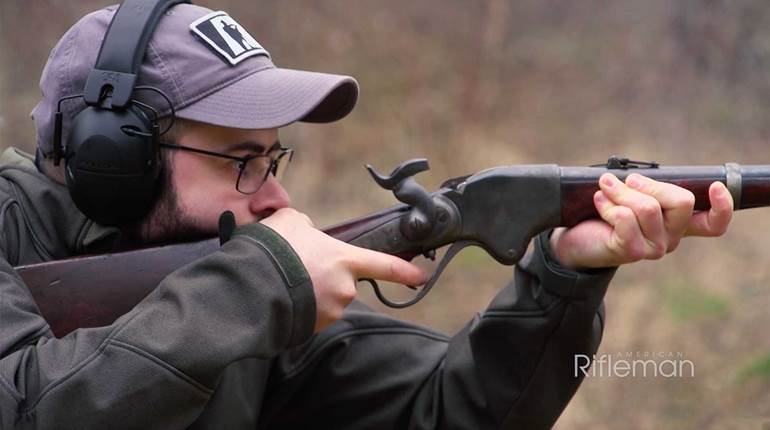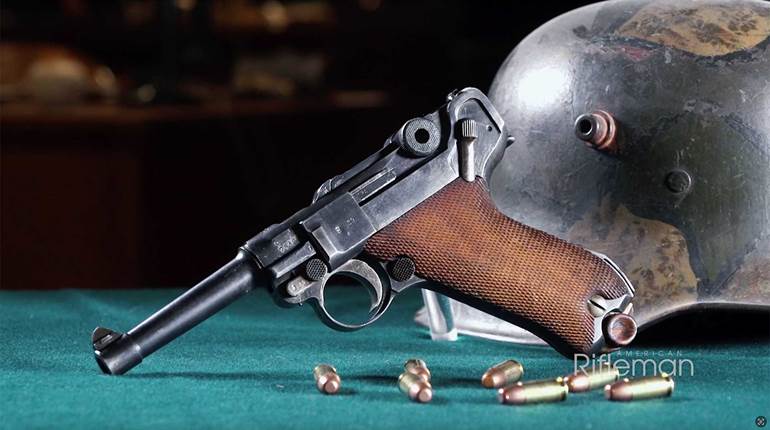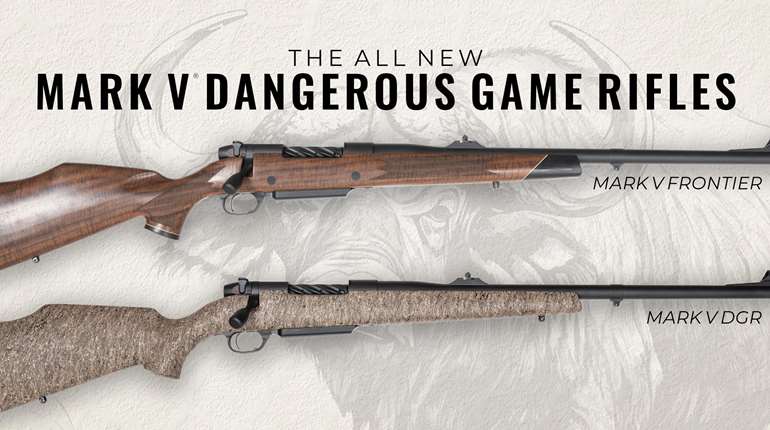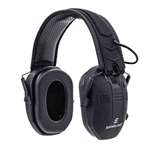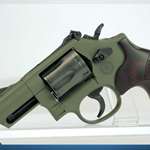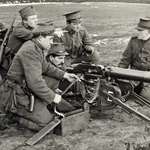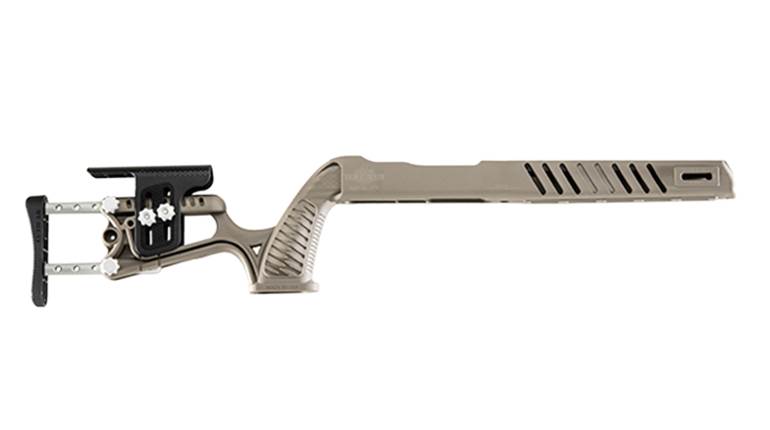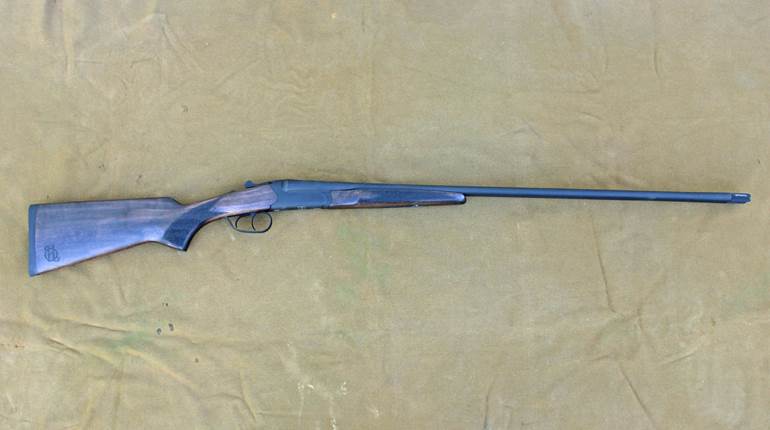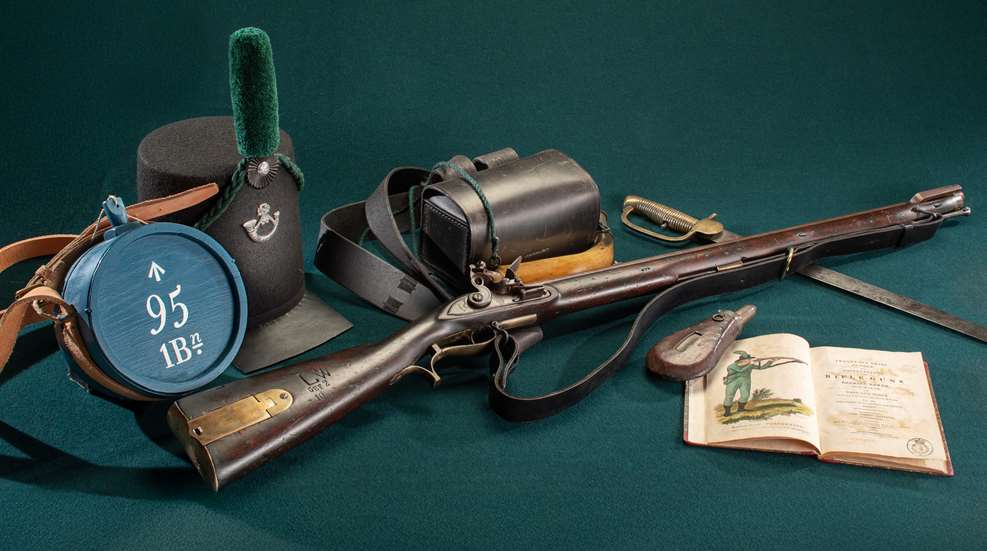
In his book Remarks On Rifle Guns, an original copy of which is shown above, inventor Ezekiel Baker noted “There were barrels of French, German, Spanish, Dutch, American, and all nations, brought forward in competition: but mine beat them all, in a trial at Woolwich before the committee—the distance 300 yards.”
During the past 20 years or so, Britain’s famed 19th century “Baker” rifle has achieved a good deal of renown resulting from its starring role in the “Sharpe” novels of Bernard Cornwell, as well as in a Sharpe spinoff television series. Interestingly, the cognomen “Baker rifle” was not used during the period the arm was in service (1800-c. 1839). In its heyday, it was normally referred to simply as the “Infantry Rifle.”
British military interest in riflery dated back to at least the middle of the 18th century. At that time German rifles were pre-eminent on the continent, and, while English rifles were by no means unknown, the use of such specialty arms by German jägers (hunters) was more traditional and commonplace. Add this to the fact the British monarch George II and his successor in 1760, George III, were also Dukes/Electors of Hanover, and one can understand why the majority of British martial rifles ended up not only resembling their Teutonic counterparts but were often supplied by German makers.

After some formative fits and starts, British authorities, in 1775 or 1776, decided to order specially made rifled carbines from Hanover. These muzzleloading flintlock arms, as their designation implies, were short, of “carbine bore” (.62 caliber) and very much followed the lines of indigenous hunting arms. Befitting their carbine status, they were set up with captive swivel ramrods—a feature that would later be more commonly seen on cavalry shoulder arms and pistols.
 At some point, it was decided, for logistical and cost purposes, to assume rifle production in England. Manufacture of the German guns was halted at 200 units, and contracts were let out to British makers on an arm similar to the Hanoverian carbine but with some subtle differences—mostly in furniture design. Like its Pattern 1776 Hanoverian counterpart, the English Pattern 1776 was of carbine bore, had a swamped octagonal barrel and a two-leaf rear sight. In all, some 800 of these arms were produced. Most saw service in the American colonies during the Revolutionary War.
At some point, it was decided, for logistical and cost purposes, to assume rifle production in England. Manufacture of the German guns was halted at 200 units, and contracts were let out to British makers on an arm similar to the Hanoverian carbine but with some subtle differences—mostly in furniture design. Like its Pattern 1776 Hanoverian counterpart, the English Pattern 1776 was of carbine bore, had a swamped octagonal barrel and a two-leaf rear sight. In all, some 800 of these arms were produced. Most saw service in the American colonies during the Revolutionary War.
Though the muzzleloading Pattern 1776s proved to be perfectly satisfactory arms, in early 1776, a flintlock breechloading arm designed by Capt. Patrick Ferguson of the 70th Regiment of Foot was demonstrated to the Board of Ordnance. Based on a previous arm by Frenchman Isaac de la Chaumette, who in turn had likely cribbed his design from even earlier sources, Ferguson’s rifle was a major departure from anything then in British inventory.

The system involved a rotating cylindrical screw plug breechblock, which was lowered by rotating the gun’s trigger guard one complete turn. This enabled the shooter to rapidly load and fire the piece by dropping a bullet in the breech where it was stopped by a slightly reduced shoulder at the start of the rifling. A measured powder charge was introduced behind the bullet and the plug closed. The rifle was then primed, aimed and fired.
Ferguson’s .60-cal. arm was lightweight and handy to manipulate. The gun’s major drawback was found to be the cuts needed to accommodate the breech mechanism, which severely weakened the stock through the central area of the lockplate, a drawback that became manifest during active service when some arms broke at this point. Despite its fragility, it was decided that construction of muzzleloading Pattern 1776 rifles would be ceased in favor of the Ferguson. To take advantage of the new arm, a corps of riflemen was formed, composed of chosen men from various regiments who, in the opinion of the officers, had displayed greater acumen with firelocks than their comrades.
Following training, the unit was dispatched to the colonies where, under the command of Ferguson, it saw limited service during the Revolution. Though the Corps of Riflemen performed well at the Battle of Brandywine on Sept. 11, 1777, Ferguson himself was wounded, and Gen. Howe subsequently disbanded the unit, with the men and their rifles being dispersed to other regiments where they were employed as light infantry. Ferguson later served as a major in the 71st Regiment of Foot and was killed at the Battle of King’s Mountain in 1780. Without his championing, any hopes of resurrecting a major British rifle presence were doomed.
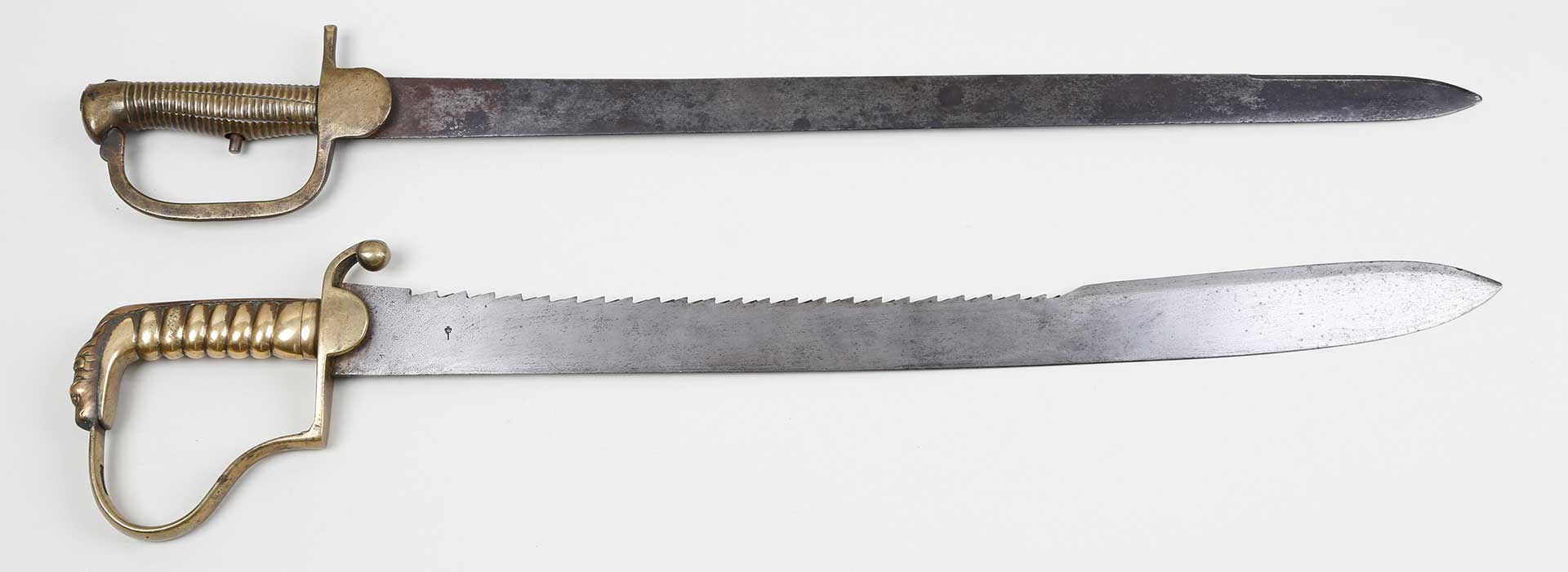
Following the Revolution, for a time, interest in riflery in the British army, while not exactly moribund, did wane. During the French Revolutionary Wars, which began in 1792, experiences against superior French light infantry and skirmishers caused the British to re-evaluate and re-organize their own military organizations accordingly. In 1800, authorities decided, with the notable support of the Duke of York, to establish an “Experimental Rifle Corps.” Unlike previous battalions that had been armed with a mixture of rifles and smoothbores, the new unit would be comprised solely of riflemen. Several regiments were requested to provide officers and non-commissioned officers to train men selected for their intelligence, superior marksmanship and ability to think for themselves—as riflemen would be expected to exercise more personal initiative than that afforded to normal line troops.
Training proceeded apace, ultimately resulting in the formation of the Corps of Riflemen, which in 1803 would be renamed the 95th Regiment of Foot (Rifles). Garbed in distinctive black-faced, hunter-green uniforms, which would result in their nickname “grasshoppers” from the French, by the end of the Napoleonic Wars, the unit would be increased from one to three battalions and would serve with distinction in South America, in the Peninsular War in Spain and Portugal under Sir Arthur Wellesley (later Duke of Wellington), in the United States during the War of 1812 and at the Battle of Waterloo.
Naturally, the choice of a proper rifle with which to arm this elite organization was of paramount importance. The Board of Ordnance invited gunmakers to present rifles for testing, eventually settling on a Germanic-looking piece submitted by Ezekiel Baker of London.
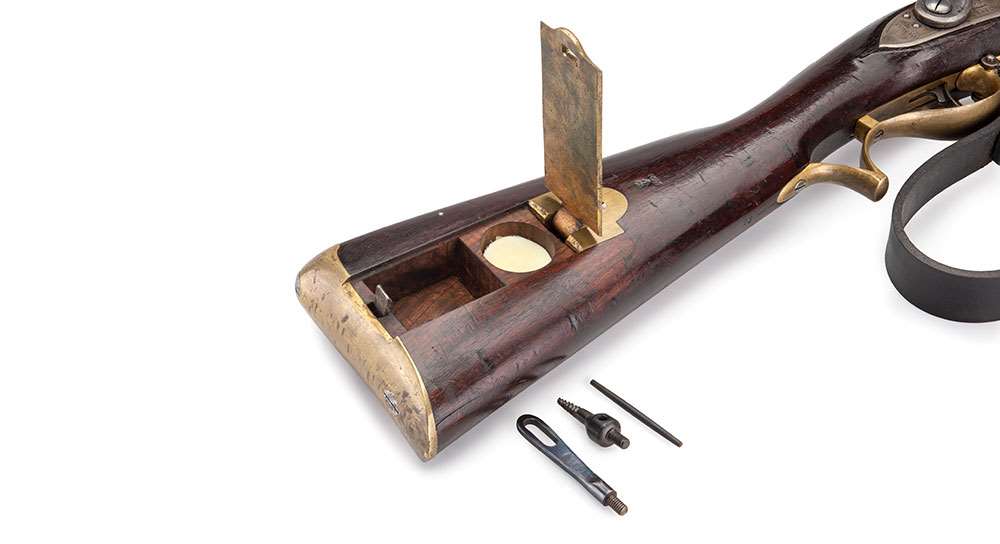
Following minor initial evolutionary changes, the Pattern 1800 Infantry Rifle based on Baker’s design appeared. It was of .625 caliber, weighed a well-balanced 9 lbs. and had a 30¼" tapered, round, browned hook-breech barrel (both twist and plain iron styles were seen) rifled with seven angular grooves making a one-quarter turn in its length. Overall length of the rifle was 46¼", as opposed to the standard “India Pattern” smoothbore musket issued to British line regiments that measured some 55¼".
The rifle’s stock was of walnut and featured a cheekpiece. Brass furniture included a finger rest trigger guard, ramrod pipes, buttplate, nose cap, thumbpiece and distinctive hinged butt box lid covering dual compartments that held tools and patches. Steel/iron parts, with the exception of the bright ramrod, were case-colored. High-grade locks were of carbine size with reinforced cocks. Some were fitted with an internal fly to prevent the hammer catching on half-cock when the trigger was pulled, others were not. The ramrod featured a button end for ease of withdrawal and loading, just in front of a transverse hole intended to accommodate a torque bar that provided leverage when a ball had to be manually pulled from a barrel.
Sights involved a fixed-notch and folding-leaf rear graduated to 100 and 200 yards and a non-adjustable blade front. A sturdy bayonet bar was brazed on the front right side of the barrel. This was for affixing a 22" steel-bladed bayonet with brass D-guard hilt, termed by the British rifleman then, and to this day, as his “sword.” Barrels, locks, stocks and other parts were made by contractors and assembled by Tower Ordnance.
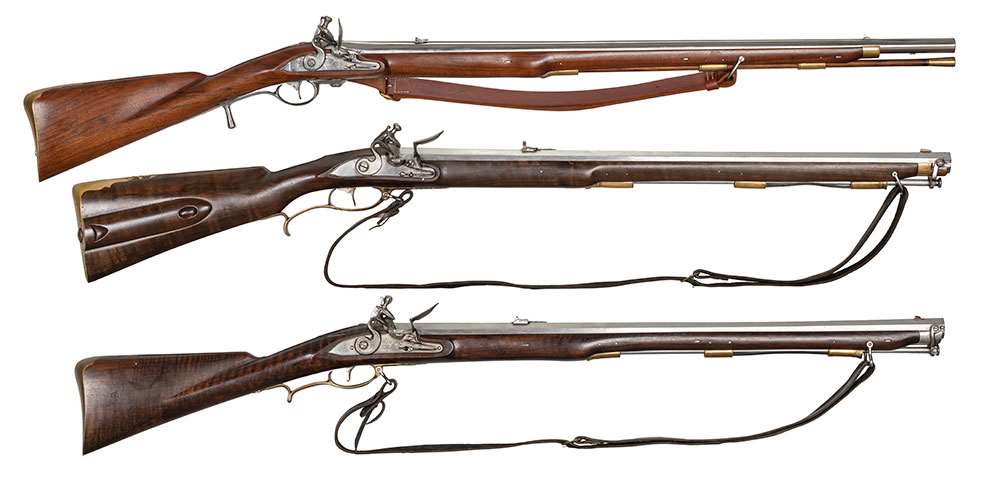
Baker ammunition consisted of a round ball used with either a cloth or leather patch for longer-range precision shooting or, when the rifleman was employed in “close order,” with a naked ball (running bullets) so the gun could be more rapidly loaded. Bullets were carried either loose in a ball bag at the right, front of the soldier’s waistbelt or in paper cartridges, which were stored in a slung cartridge box. Patches were either separate or affixed to projectiles, the latter arrangement providing for greater ease of loading. Patched bullets were 20 to the pound (.596 cal.); running bullets were 22 to the pound (.615 cal.).
Other accoutrements consisted of a powder horn that, ideally, was set up to throw a service charge of 31/2 drams (96 grains), pick and brush, tools—ball drawer, wiping eye and the aforementioned torque bar—and oiled cloth or leather lock cover. Initially, riflemen were issued with separate priming flasks that were carried in a pocket on the soldier’s jacket as well as bullet-starting mallets. Both conveniences were ordered to be removed from service early on, even above the complaints by Ezekiel Baker who, in 1806, bemoaned the mallets’ withdrawal—but there is some reason to believe they remained in soldiers’ hands for longer than is regularly supposed.
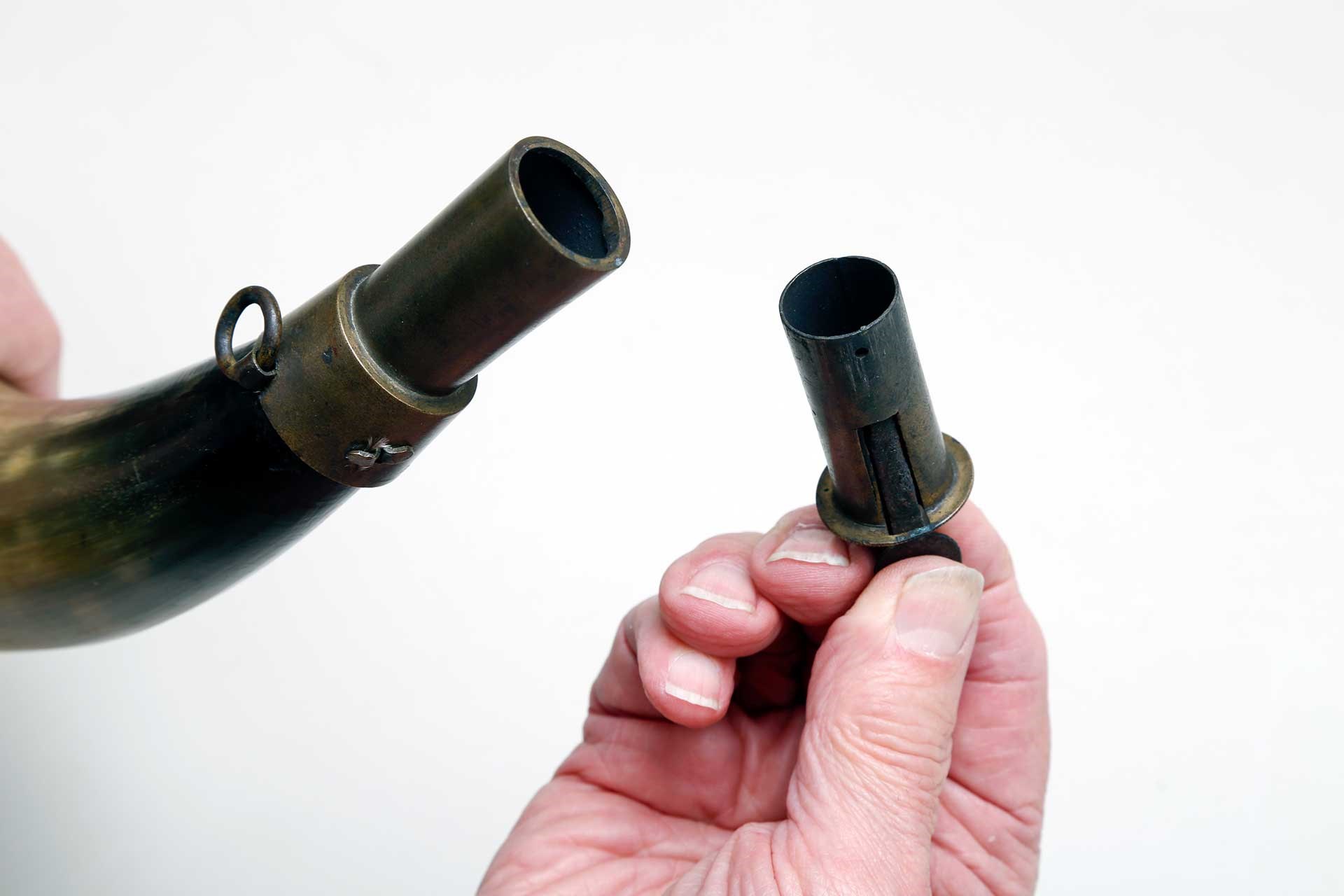
When using a patched ball, loading a Baker took about a minute per round as opposed to a three-rounds-per-minute rate with a smoothbore musket. Baker accuracy was far superior to that of the “Brown Bess” musket. In his book, Twenty-Six Years Practice And Observations With Rifle Guns, Ezekiel Baker illustrated two figural man-size targets each depicting the results of 24 shots fired at 100 and 200 yards. With the exception of four rounds, all hit the subjects, largely in vital areas. Baker noted, ”200 yards was the range I could fire with certainty. I have shot very well at over 300 when the wind was very calm. At 400 and 500 I have sometimes struck the object. Though I have found it to vary much.” One of the most renowned feats achieved using a Baker occurred in Spain in 1809 at the Battle of Villafranca by Rifleman Thomas Plunkett, who killed French Gen. Auguste Marie Francois Colbert with a well-aimed shot at 300 yards.

During its early years, the Pattern 1800 saw a few nuanced changes, but beginning around 1805, the rifle was given a more obvious workover. Still maintaining the overall size, caliber and general look of its predecessor, the Pattern 1805 did exhibit some interesting changes. Probably the most noticeable alteration was in the size and shape of the buttbox, which was reduced to a single compartment. Around 1810, a slit was added to the underpart of the stock between the end of the ramrod channel and the front of the trigger guard to allow the rod to be more easily withdrawn. The lockplate also received a slight cosmetic makeover.
As well as the Patterns 1800 and 1805, other Baker variants also were seen. In 1810, ordnance officials experimented with a musket bore (.70 cal.) version, though it apparently never made it much past the exploratory stage. Few examples are known today. Additionally, in 1803, a diminutive cavalry rifle was introduced. Initially issued to the 10th Light Dragoons, its role expanded to ultimately arm 10 men per troop of each British light dragoon regiment. Originally produced with a straight stock, in 1813, the stock was given a rounded pistol grip. Both the 1810 and 1813 cavalry rifles featured bolted lock safeties.

Along with the 60th and 95th rifles, during the Napoleonic War period, Bakers were provided to the King’s German Legion and Portuguese caçadores. In response to a possible French invasion, numerous British volunteer infantry and cavalry regiments intended for home service were formed. Most were armed with smoothbores, but some rifle corps were also seen. Rifles carried by these units ranged from standard-pattern Bakers, through imported rifles, to privately purchased London and Birmingham arms showing Baker characteristics but with features added or eliminated, depending upon the whims and depth of purse of the units’ commanding officers. The British East India Co. also purchased a good number of British-army-style Bakers between 1802 and 1828.

With the defeat of Napoleon’s forces, a certain amount of retrenchment occurred in the British military. At least rifles had proven themselves in the French wars and were now firmly entrenched within the establishment. Therefore, unlike earlier times, rifle units remained as permanent features. Bakers continued to be the rifles of choice. In 1815, a number of serviceable Pattern 1800s were altered to accommodate a proprietary socket bayonet by having their stocks cut back by 3" and their bayonet bars removed. This version was termed, appropriately, the Pattern 1800/15. As the modification deprived the rifleman of his cherished “sword,” a special saw-back Pattern 1816 hanger sword was adopted in its place, to be carried along with the angular bayonet.

The next major change occurred in 1823 with the decision to produce 10,000 new rifles, again by the contractor method. Outwardly resembling the Pattern 1805, the 1823 did differ from the 1805/15 in some ways. Perhaps the most obvious was the jettisoning of the reinforced cock for an earlier, swan-necked style. The rear sight was a single, fixed notch and the front was a brass blade. The full-length stock was re-introduced, as were bayonet bars, though the “Pattern 1823 Hand Bayonet” differed from its predecessors, having its 17" triangular blade affixed to a brass sword grip lacking its knucklebow.
In 1827, the cavalry rifle was also given a bit of a new start, with numbers of Pattern 1813s, which had seen hard usage, receiving new pistol grip stocks and the rejuvenation of some components. Earlier locks with push-on safety bolts were replaced with plain ones.

The Infantry Rifle continued to soldier on in the British service for another dozen years or so, when it was replaced by the percussion Brunswick rifle. This arm was also adopted from German patterns and fired a belted ball that mechanically fit into the barrel’s deep two-groove rifling. Two patterns of Brunswick would see service until they were eventually moved aside in favor of the Pattern 1851 Minié and Pattern 1853 Enfield rifle muskets.
This was not to be the end of the Baker’s story, however, as many surplus guns were sold out of stores—probably most famously to Mexico, where they were carried by Mexican cazadores during the Texas Revolution (1835-36) and Mexican-American War (1846-48).
Today, original Baker rifles of any type are scarce and sought-after. Prices for particularly rare models or pristine examples of the more common versions can easily approach five figures. Fortunately for enthusiasts wishing to fill a gap in their collection or for shooters, modern replicas are available. The Rifle Shoppe (therifleshoppe.com) provides high-grade parts kits for Baker rifles and carbines. Too, smoothbore versions are made in India for re-enactors, though the quality of these can vary considerably. The best version the author has seen is sold by Loyalist Arms (loyalistarms.ca). Loyalist has its own devoted maker in India to ensure fidelity to the original, and the company thoroughly goes over and refines the guns when they arrive at its facility in Canada. There has also been a persistent rumor that Davide Pedersoli (davidepedersoli.com) has been contemplating producing an Italian-made Baker.
Famed in its day, the Baker’s reputation has scarcely faded. After less than 50 years of service, new firearms technology may have overtaken it, but the rifle’s achievements and the devotion and the adventures of those men who carried it will not easily be forgotten.













